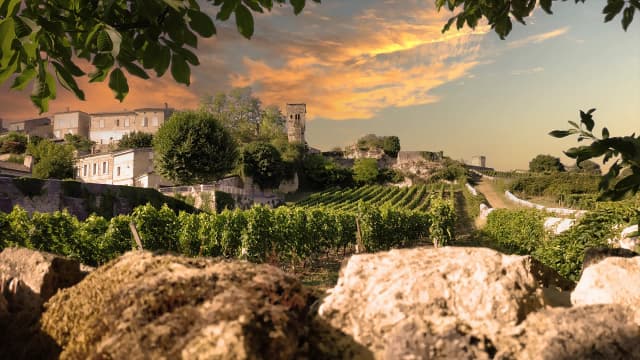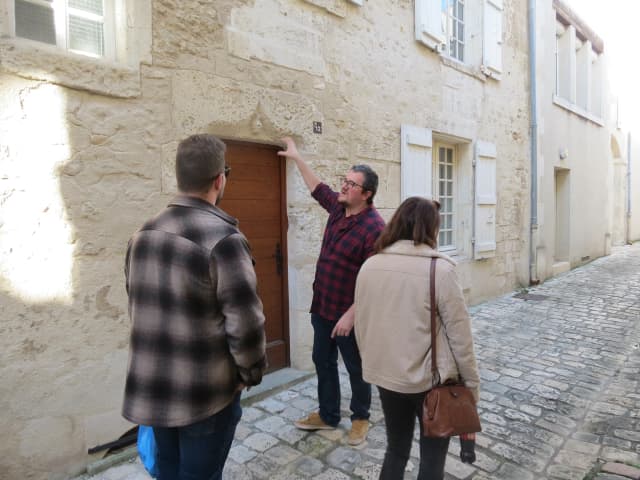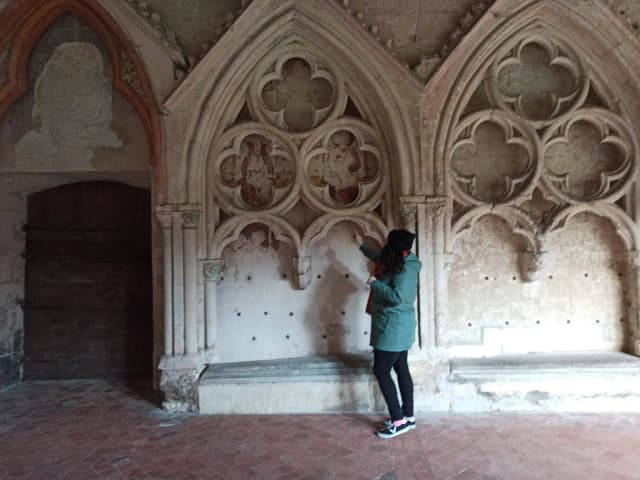So, you finally booked your long-anticipated visit to Bordeaux, France. Now, you look forward to indulging in world-renowned red wines amidst picturesque surroundings. And who wouldn’t? It is no coincidence that wines from the Bordeaux winemaking region have graced the tables of royal families and esteemed foreign dignitaries for centuries. But Bordeaux wines are a complex subject that needs to be explained.
As certified tour guides in France, we have gathered our guests’ wine questions and created BORDEAUX WINES UNCOVERED – a series of articles dedicated to wine. We hope this short, to-the-point series will help you understand the local wines more efficiently before even taking a wine tour. To comprehend the acclaim surrounding Bordeaux wines, a journey into their historical roots is imperative.
Bordeaux, renowned for its exceptional wines, boasts one of the most prestigious and extensive vineyard regions globally. Bordeaux is a viticultural powerhouse in southwestern France, representing over 120,000 hectares (300.000 acres) of vineyards. The region’s climate, influenced by the Atlantic Ocean, creates ideal conditions for growing classic grape varieties, such as Merlot, Cabernet Sauvignon, and Cabernet Franc.
Its vineyards are divided into sub-regions like the Left Bank and Right Bank, each imparting distinct wine characteristics. The Medoc, Pomerol, and Saint-Émilion are just a few of the celebrated appellations within Bordeaux, contributing to its rich oenological tapestry.
The city of Bordeaux itself serves as the epicentre of the region’s wine trade, hosting numerous historic châteaux and cellars. Bordeaux wines are revered for their complexity, structure, and ageing potential, attracting wine enthusiasts worldwide. But when and where did it all begin?
Historical Foundations: Roman Influence on Bordeaux wines
The roots of Bordeaux wines trace back to Roman antiquity, with evidence of vine cultivation and winemaking activities dating as far back as the 1st century AD. During this epoch, Bordeaux, or Burdigala as it was then known, swiftly ascended to capital status thanks to its strategic position along the Garonne River and proximity to the Atlantic Ocean. The Romans discerned the potential of the region’s fertile soils and temperate climate for vine cultivation, laying the foundation for Bordeaux’s viticultural prominence. Nevertheless, it was in the 12th century that Bordeaux wines began to garner significant attention.
Interesting fact: The ancient red grape variety named Biturica was the first type of vine introduced in old Bordeaux. It is the ancestry of Cabernet Franc.

The Middle Ages: The Golden Age of Bordeaux Wines
The pivotal union of Eleanor of Aquitaine to Henry Plantagenet, later King Henry II of England, marked a critical moment for Bordeaux wines. This matrimony placed the region under English dominion, opening new markets and trade routes. The establishment of the Jurade by John Lackland in 1199 in Saint Emilion and subsequently in Bordeaux secured numerous privileges for wine export and trade with England. Bordeaux’s ascendancy persisted as trade flourished, and its wines found favour among European elites.
A Renaissance: The Second Wind for Bordeaux Wines
In the 17th century, Dutch traders flocked to Bordeaux, drawn by the allure of its wines. Their influence extended to the draining of the Medoc area, transforming it from wet meadows to expansive vineyards. Innovations such as using sulfur to sterilize barrels, cooperage to combat mildew, and advancements in ageing techniques were introduced, and this period witnessed a substantial expansion of vine cultivation, shaping Bordeaux wines into a global commodity.
Structuring Excellence: Classification Systems of Bordeaux Wines
The inaugural Bordeaux wine classification in 1855, commissioned by Emperor Napoleon III for the Exposition Universelle de Paris, played a pivotal role in aiding foreigners in comprehending French wines. This classification ranked the region’s premier châteaux based on reputation and market prices, forever etching names like Château Lafite Rothschild, Château Margaux, and Château Latour as first growths. Subsequent classifications, including those for Saint Emilion and Graves and Sauternes, further underscored Bordeaux wines’ significance, endowing them with a label of quality and tradition.

Interesting fact: From 1875 to 1892, Bordeaux vineyards faced a formidable threat in the form of phylloxera, a pest devastating vine rootstocks. The near decimation of vineyards was averted by discovering that American rootstocks resisted this bug, providing a crucial lifeline for the Bordeaux vine. The production levels never recovered: France used to produce more than 2200 million gallons (84 million hectolitres) in 1875, down to 1400 million gallons (53 million hL) on the eve of World War 1, almost 50 years after the phylloxera first came to Europe…
The Essence of French Terroir
The global renown of Bordeaux wines transcends its historical legacy to encompass geographical diversity, particularly encapsulated in the secret of the French terroir. Terroir, a fusion of soil, climate, and human expertise, imparts distinctive qualities to the grapes. The region’s divisions into sub-regions, each characterized by unique microclimates and soil compositions, contribute to the diversity of Bordeaux wines. The Left Bank, housing esteemed appellations like Margaux, Pauillac, and Saint-Julien, features predominantly gravelly soils, producing elegant and structured Cabernet Sauvignon-based wines. The Right Bank, home to appellations like Saint-Émilion and Pomerol, is characterized by clay and limestone terroir, resulting in signature fruity Merlot wines.
Interesting facts: Famous people drinking Bordeaux
Thomas Jefferson: The third President of the United States and known wine enthusiast, often ordered boxes of famous Bordeaux wines and avidly loved the Bordeaux blends. Winston Churchill, former British Prime Minister, was known for his appreciation of the excellent bottle of Chateaux Margaux. Queen Elizabeth II also enjoyed wines from Bordeaux on her royal table.
A Culmination of Centuries: The Prestige of Bordeaux Wines
The renown of Bordeaux wines is an amalgamation of centuries of rich history, a diverse and distinctive terroir, and time-honoured winemaking practices. From the ancient vineyards tended by monks to the contemporary châteaux that grace the landscape, Bordeaux wines persist as exemplars of excellence and prestige.
If you want to visit Bordeaux and Saint Emilion with a state-certified, wine-loving, local guide, consider booking one of our fantastic Bordeaux Wine tours HERE!
Understanding the appellation system (AOC)
To summarize Bordeaux wines, you’d say a red, barrel-aged blend of merlot and cab sav wine. But in reality, it’s more complex (of course it is…) as there isn’t only ONE type of Bordeaux. You now need to understand how the vineyards are organized in France: the Appellation d’Origine Contrôlée (or A.O.C).
What is an appellation?
Bordeaux is actually like a generic name. Bordeaux comprises about 60 different appellations, as many different subregions and as many wines).
So that’s why a Sauternes is considered a Bordeaux wine, but also Saint-Emilion, even though they couldn’t be more different.
Check out this well-made map to get a better idea :

For more information, check out this interactive map
Each smaller subregion has its own “name”, vineyards, and rules: it is what we call an Appellation d’Origine Contrôlée (or AOC). Simply put, it’s a bunch of regionally specific rules to maintain the same level of quality among the producers. The rules cover the type of wines you’re allowed to make, with which kinds of grapes, if it has to be barrel-aged or not, etc…
The goal of an appellation is to protect the “savoir-faire” (know-how) and protect both customers and producers: it acts as quality insurance for a customer (you know a Saint Emilion HAS to be made like that and not any other way), and for a winemaker, it makes sure that the market is “protected” (no one can use the name if they are not within the delimited region AND don’t comply with all of the rules).
But one essential thing to understand: winemakers are not FORCED to follow the rules of an appellation. They are only obliged to do so IF they want to put the appellation’s name on their bottles.
For example, a winemaker owning a vineyard in Saint-Emilion technically cannot produce any white wines (because it’s not in the rulebook). But he can still freely plant some white grapes and make white wines if he wishes… But he will never be allowed to put the name “Saint Emilion” on the bottles produced this way because he didn’t follow the appellation rules (that states a St Emilion has to be red…). So he would have to “declassify” it and sell it under the more generic name of “Bordeaux”.
In conclusion
Now that you’ve got the basics (history of the vineyard and the basics of what appellations are), we need to cover a few other subjects: a detailed explanation of every appellation in the Bordeaux region (with their grapes and terroir), the impact of barrel ageing etc… Which you will find in the following articles of our series! You can quench your thirst for questions with our Frequently Asked Questions.
If you want to explore Bordeaux and the region with a full-inclusive wine tour, you can discover what we offer on Bordeaux Uncovered, your expert-guided tours agency.
FAQ about Bordeaux Wines
Are Bordeaux wines red or white?
Both! In the Bordeaux region, you can find 65 appellations (“wine regions”) allowing either only red, only white, both, rosé or even sparkling (called Crémant de Bordeaux).
But in the end, about 80% of Bordeaux wines are red.
Is Bordeaux wine sweet or dry?
Bordeaux is a global name used to encompass 65 types of wine, amongst which you’ll find a vast majority of Dry Red Wine (Médoc, Saint-Emilion, Pomerol…), but also some Dry White (Entre-Deux-Mer and Bordeaux White) and some Sweet White (Sauternes, Sainte-Croix-du-Mont, Monbazillac etc…)
Is Bordeaux a blend
It technically doesn’t have to be, even though most are.
So when they are, they are a blend of :
– for red wines: a mix of merlot, cabernet franc, cabernet sauvignon, and on some occassion malbec, petit verdot and carmenère
– for white wines: sauvignon white, sémillon (mostly in Sauternes), some muscadelle and sauvignon grey.
Bordeaux wines, Left or Right bank
This is a designation from the significant river splitting the region in 2, the Garonne.
The regions on the western (“left”) side are Left Bordeaux, and the others are the Right.
On the left, you’ll find all the Médocs (8 appellations there), Pauillac, Graves and Sauternes.
You can find Saint-Emilion, Pomerol, Fronsac, Blaye and Bourg on the right.
And stuck in between, you’ll find … the “In-Between-Two-Seas” – Entre Deux Mers in French, literally between the two sides of the rivers.
What’s the price of a Bordeaux wine
Anywhere between 5€ and 2.000€.
Bordeaux is a major wine-producing region with many producers. So you can expect a huge variety of prices.
You can find some good bottles for 7-8€, some very good bottles for 20€, and then it skyrockets.
A great Pomerol will cost you around 300-500€.
A Lafite-Rotschild 2021 costs around 2.200€.
What’s the typical Bordeaux wine blend
In terms of grapes, the most used variety here is Merlot by far (around 66%), followed by Cabernet Sauvignon (~22%), about 10% Cabernet-Franc and then 2% others.
But even that can significantly differ from one Bordeaux appellation to another. Saint-Emilion is mainly known for its majority of Merlot, while Saint-Julien primarily uses Cabernet-Sauvignon…
What’s the best way to do a wine tour in Bordeaux
Many chateaux can take you in for a tour and tasting. You need to book an appointment and get there.
The better approach would be to let pros do it for you, just like us! We offer city and wine tours throughout the region of Bordeaux, from just a couple of hours to full-day tours and full customization.
Don’t hesitate to contact us here or check out all our tours.




